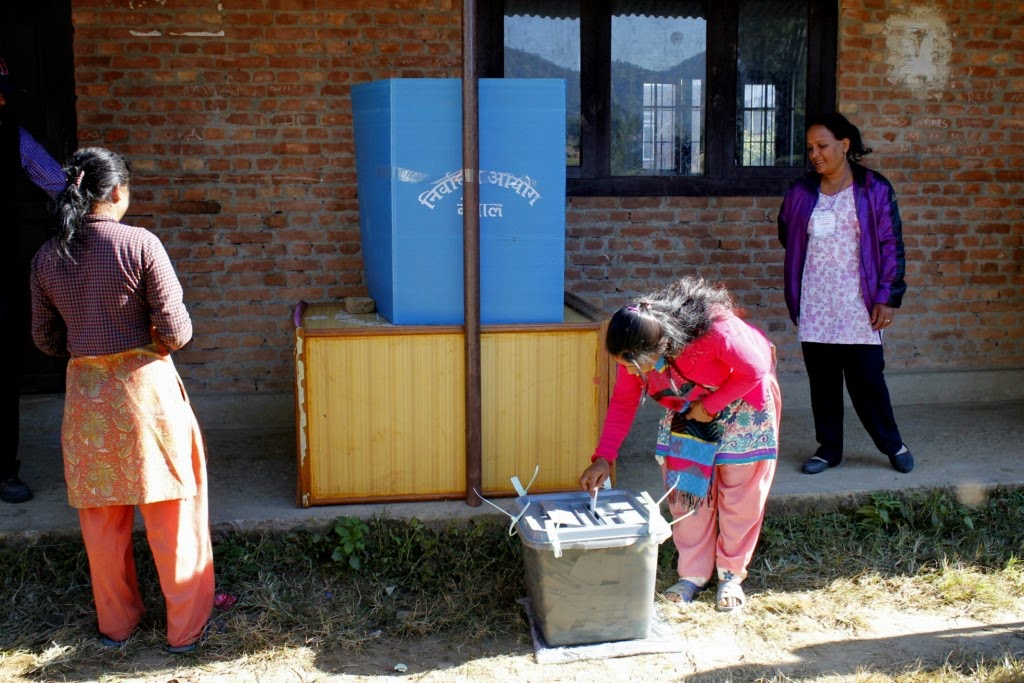NEPAL AFTER PEOPLE'S MOVEMENT-II
Nepal, well known in the word community as a peaceful Shangrila and the Land of Peace, hasn't yet experienced a sustainable peace . The successive hundred-years of Rana tyranny, Panchayat System and decade long Maoists revolution deprived Nepalese of a sense of peace and solemnity in their heart. The long term political instability, insecurity and the stagnant development compelled people to launch the movement, widely known as Jana Andolan-II.
The historical importance of the movement lies in the fact that it overthrew 240 years old royal dynasty to reinstate the suspended parliament and establish absolute democracy in Nepal. The movement lasted for nineteen days in April, 2006. People from every nook and corner of the country gathered at Kathmandu, the capital of Nepal, for the demonstrations. They chanted slogans against the autocratic rule of the existing king and expressed their disillusionment. People from all grounds including dalits, janjatis, madhesis and from all levels like civil servants, citizens, civil societies and international communities participated in the movement. In the meantime, the Maoists Revolution reached at climax, following a 12 point agreement between Maoists and major political parties ( known as Seven Party Alliance) and hence the combined effect overthrew the king from throne.
 |
| Demonstrations against King infront of Royal Palace source:wikipedia |
 |
| A man (center) shouting the slogan source: wikipedia |
The video below shows the police brutality on revolutionists during People's Movement II.
https://www.youtube.com/watch?v=ZlLuV4wRTyg
The video clip below shows the glimpses of People's Movement II.
https://www.youtube.com/watch?v=leg0rqiXntY
https://www.youtube.com/watch?v=ZlLuV4wRTyg
The video clip below shows the glimpses of People's Movement II.
https://www.youtube.com/watch?v=leg0rqiXntY
The historical achievement led to signing on Comprehensive Peace Accord on November, 2006 which officially ended the Maoists insurgency, welcomed United Nation Mission to assist Nepal in it's peace process by successfully organizing the election which was supposed to bring new constitution in the country and monitoring arms and armed personnel, declared Nepal as a republic and secular state( before known as the only Hindu kingdom in the world).
 |
| Signing on Peace Accord( left- Girija Prasad Koirala, the then prime minister of interim government and right-Puspa Kamal Dahal ''Prachanda", leader of CPN Maoists) source: wikipedia |
 |
| UNMIN monitoring arms and armed personnel source: wikipedia |
In between the period of 2008 to 2011, Nepal saw many coalition governments come and go failing to address the nation's need and promulgate the new constitution. The deadline for formulating the constitution was postponed to May, 2011( previously scheduled for May, 2010). However, the elected 601 Constitutional Assembly members failed to reach an agreement in stipulated time. The failure of political parties to compromise continued and the tenure of Constitutional Assembly was again extended for one year. On May, 2012, the then prime minister dissolved the parliament and called for election on November after politicians failed to reach on agreement on a new constitution. The political drift between opposition parties never seemed to settle and thus, increased frustrations among the citizens.
On March , 2013 ,the major parties found out a way to sort out political impasse and appointed Chief Justice Khil Raj Regmi as a head of an Interim Government. The election was held but again the political deadlock arose as no party won a majority. Finally , Sushil Koirala,the veteran leader of the Nepali Congress, the country's largest political party , was elected as the prime minister on February, 2014 with the responsibility of drawing new constitution. But, with the allocated time approaching to an end on January,2015, no substantial efforts have been done to formulate the constitution and consequently, pushing Nepal into an abyss and on the verge of collapse.
 |
| A woman (center) dropping ballot paper in ballot box during election source: wikipedia |
Looking to the future, the situation in Nepal seems tense and to worsen more with the major political parties stuck on issues of federal structures of Nepal and consistently failing to reach consensus. The elections of Constitutional Assembly were held twice but failed to complete an assigned task either time. And, the worst of all Nepal had had six prime ministers in last five or six odd years.
References
www.ekantipur.com
www.aljazeera.com
www.bbc.com
www.nytimes.com
No comments:
Post a Comment